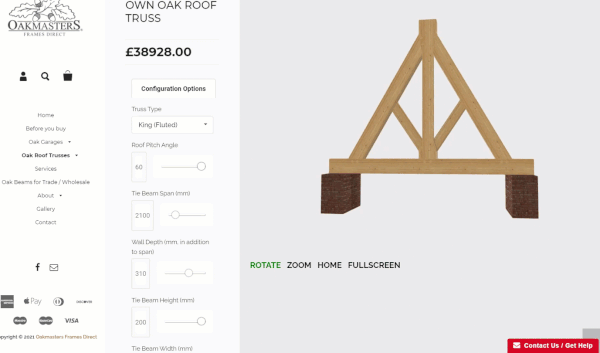What's the Difference Between Layer 1 and Layer 2 Blockchains?

If you're new to blockchains, you might be wondering what the difference is between Layer 1 and Layer 2 blockchains.
Blockchains are distributed databases that the nodes of a computer network share with each other. Blockchains, including Layer 1 and Layer 2 blockchains, help secure and decentralize records of transactions in cryptocurrency systems.
In turn, transactions generate a trustworthy record of data without any need for third-party verification.
In the following post, we'll look at the specific differences between Layer 1 and Layer 2 blockchains, along with how each one works.
What is the difference between a Layer 1 and Layer 2 blockchain?
Blockchains are generally split into two base blockchains, including Layer 1 and Layer 2 blockchains.
Layer 1 blockchains are the underlying blockchains in the main architecture.
Layer 2 blockchains are secondary blockchains that operate on top of Layer 1 blockchains. The purpose of Layer 2 blockchains is to improve scalability and efficiency.
Because of outdated and inefficient algorithms, Layer 1 blockchains tend to be slower than their Layer 2 counterparts.
Why are Layer 1 blockchains slow?
Not all Layer 1 blockchains are slow, but many of the oldest and most popular blockchains at this level are slow due to their existing models. Design choices made many years ago make these first-generation blockchains less efficient.
The reason for these design choices was that their creators didn't anticipate the massive growth of these blockchains, which led them to neglect to account for this growth in their designs.
What this means is that both Ethereum and Bitcoin use very costly and inefficient methods of ensuring a distribution consensus on the blockchain. We refer to these methods as proof-of-work (PoW).
The PoW consensus algorithm uses a multitude of machines all over the world to solve a series of mathematical problems. Every time a machine successfully solves one of these problems, the networks securely process transactions.
While this helps keep cryptocurrency transactions secure, it comes at a serious cost.
Keeping all of these machines in lockstep is very communication-intensive, and it limits the speed at which transactions can be processed. In addition, there is a size limit to the number of individual transactions that the networks can process simultaneously.
This means that the PoW algorithm has a large environmental impact with every processed transaction, and each transaction also comes at a high cost.
However, there is likely to be an improvement in the efficiency, scalability and eco-friendliness of Layer 1 blockchains as cryptocurrencies begin to transition to alternatives to PoW, including proof-of-stake (PoS).
The PoS consensus algorithm

In the PoS consensus algorithm, a series of nodes in a network—called "stakers"—stake their own cryptocurrencies to validate transactions. All of the cryptocurrencies on the network have already been created, and there's no need for mining.
This eliminates the need for solving complex mathematical problems. Additionally, the validation process doesn't require the resources of an entire network, which allows for improved scalability.
As more Layer 1 blockchains adopt PoS and other more efficient designs, they'll continue to become more efficient and scalable.
Currently, there are a few different Layer 1 blockchains that are helping make these blockchains more efficient. One of these next-generation Layer 1 blockchains is Cardano, which is the first blockchain supported by peer-reviewed research.
It features a secure Haskell programming language, along with a PoS algorithm called Ouroboros. This and other popular blockchains will help make Layer 1 and Layer 2 blockchains equally efficient.
How does a Layer 2 blockchain work?
Layer 2 blockchains efficiently store transactions in a low-cost fashion. They undergo periodic authentications by the Layer 1 blockchains they're built against.
These authentications are so efficient that a single Layer 1 blockchain authentication can approve as many as dozens to hundreds of thousands of Layer 2 transactions. These transactions are called "multipliers."
This process helps reduce the cost of these Layer 2 transactions by this multiplier. It also reduces the environmental footprint of these transactions on Layer 2 networks by the same multiplier, unlike most Layer 1 transactions.
What are some popular Layer 2 blockchains?
The two most popular and oldest blockchains are Bitcoin and Ethereum.
Both of these cryptocurrencies use Layer 1 first-generation blockchains, which is due to their reliance on inefficient PoW consensus algorithms. As a result, they're both incredibly inefficient and slow. They will continue to be so unless they make the switch to PoS or other alternatives to PoW.
Bitcoin has one official Layer 2 blockchain called the Lightning Network. It was initially designed in 2015; it became active in 2017.
What makes Ethereum different is that it doesn't use a singular Layer 2 blockchain, but instead uses a multitude of them all trying to win market share. Each of these Layer 2 blockchains also features different specializations.
One of the fastest-growing Ethereum Layer 2 blockchains is Polygon (MATIC), which specifically focuses on the non-fungible token (NFT) space. The uber-popular OpenSea.io NFT marketplace also supports Polygon.
What is the cost difference between Layer 1 and Layer 2 blockchains?
Mining and transfers on the Ethereum Layer 1 blockchain vary from day to day, but they're usually somewhere between $50 and $125 (USD). Meanwhile, minting and transfers on the Polygon Layer 2 blockchain are around $0.05, a factor of 2,000 times cheaper than their Layer 1 equivalents.
This means that Layer 2 blockchains are far more cost-effective than Layer 1, which comes down to their more efficient models.
How Threekit is helping drive more efficient blockchains
Although Layer 1 and Layer 2 blockchains are often inefficient because of outdated Layer 1 consensus algorithms, this is likely to change as more first- and next-generation blockchains switch to PoS and other more efficient models. More efficient algorithms and designs have a reduced impact on the environment and can make transactions more efficient.
This is why Threekit is committed to helping push the switch to PoS and other alternatives as they come along.
Specifically, Threekit only supports NFT work that is either non-PoW or is committed to transitioning away from this algorithm. In the process, Threekit hopes to help make blockchains more efficient and environmentally friendly as they evolve.
Contact us today to learn more about our services and our commitment to more sustainable blockchains.




